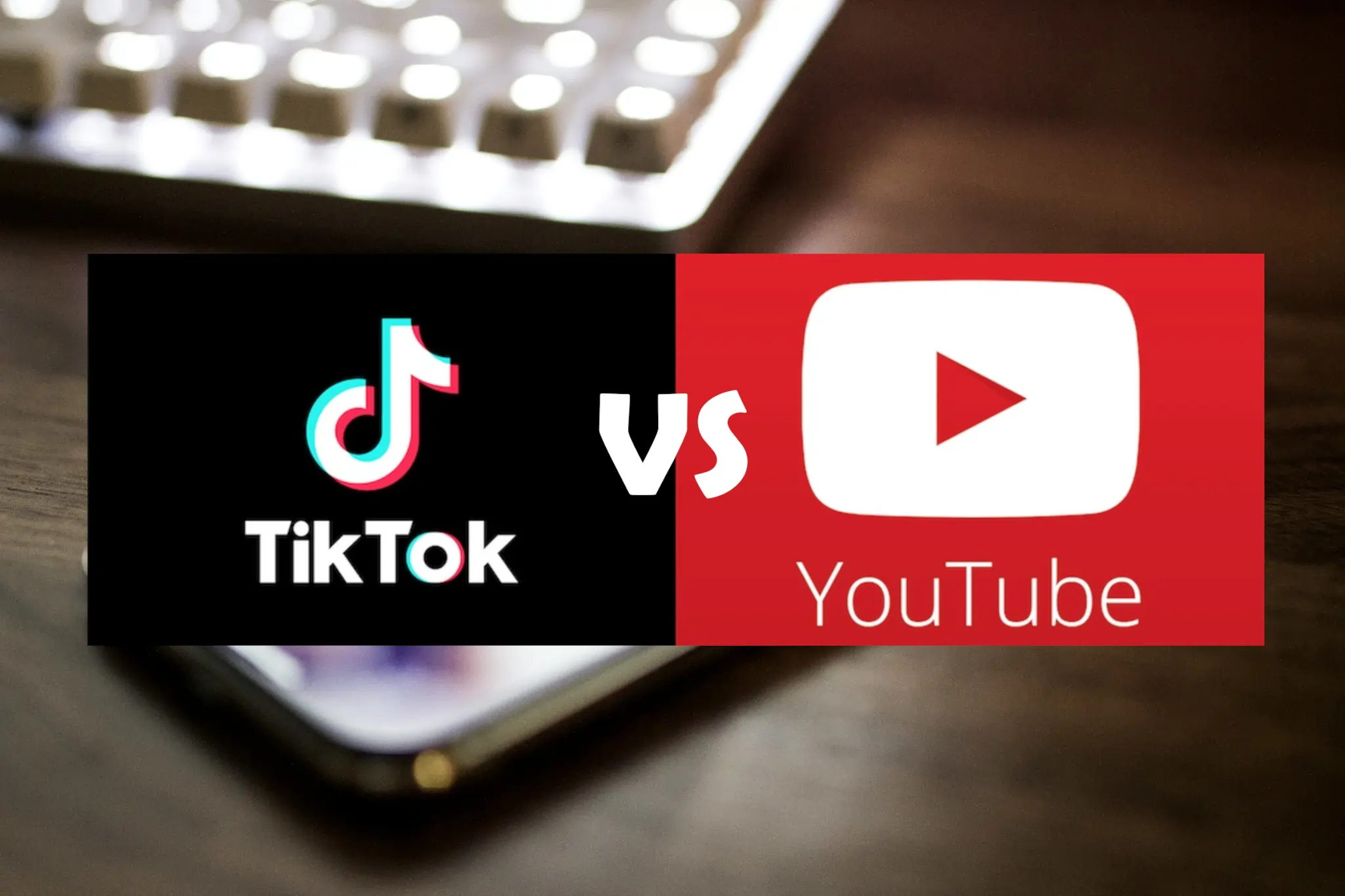The digital video universe writhes with the ebb and flow of popular social media platforms, YouTube remains in its position as the worlds leading video-sharing titan. However with the recent introduction of upstarts like TikTok the market has stirred with fresh competition not only in the adverts space but pushing content creators and users alike to reassess their platform preferences. Even under immense pressure from Governments and Corprates alike TikTok user base continues to ascend vertically, clearly people like it.
The vitality of YouTube’s reign is being tested hard and on every level, even amidst the uncertainty of TikTok’s future in the United States, where a potential nationwide ban looms over its 170 million users. This scenario is reminiscent of India’s sudden prohibition of TikTok in 2020 following geopolitical strife, an event that left a considerable void in the digital habits of its 200 million users.
India’s experience post-TikTok ban sheds light on the adaptability of both creators and audiences.
The void left by TikTok’s absence was rapidly filled by a multitude of alternatives, with Instagram Reels emerging as the new successor. American tech companies, alongside domestic startups, leapt at the opportunity to capture the sidelined user base. This demonstrates the swift pivot and pliability of the users ready to migrate to available platforms that resonate with their needs for creative expression and community engagement.
YouTube’s dominance as a video platform is rooted in its user base, depth of content, and monetization policies, which may grant it a degree of resilience against fleeting social media trends. While the environment remains fluid with platforms like TikTok and short-form video, YouTube continues to evolve, adopting features that try to appeal to an ever-changing audience. Observing these shifts can offer insight into whether YouTube can hold onto its crown or if emerging platforms, with their innovative formats, will disrupt their market share.
The shift of audiences from YouTube to TikTok is primarily influenced by TikTok’s user-friendly interface which caters to the modern consumer’s preference for quick and engaging content.
This is evident in its algorithmic promotion of short-form videos, which contrasts with YouTube’s traditional focus on longer-form content.
TikTok essentially simplifies content creation, allowing users to easily produce and share videos thereby broadening its appeal and encouraging active participation among its user base. However, this platform’s strategy of low-entry barriers for content creation and its highly addictive content delivery mechanism has not only attracted a vast audience but also made it a favorable platform for creators looking to rapidly gain visibility and engage with a broad audience.
On the monetization front, TikTok offers distinct advantages for content creators, especially when compared to YouTube’s stringent requirements for revenue generation through its Partner Program.
TikTok’s Creator Fund and features like live gifts provide accessible revenue streams, appealing to creators for their simplicity and potential for immediate earnings. Meanwhile, YouTube imposes detailed content guidelines and monetization policies that some creators find restrictive, very restrictive, so much so that there is an emerging trend of banned YouTubers openly usng TikTok as a platform to vent about their poor experiences with YouTube’s policies.
The combination of TikTok’s user engagement model, easier access to monetization, and less restrictive content creation environment underlines the platform’s growing allure for both viewers and creators, showcasing a shift in the digital landscape towards platforms that prioritize ease of use, flexibility, and rapid audience engagement.
The Landscape of Video Platforms
Video platforms is constantly evolving, with an array of services vying for the attention of a diverse and segmented global audience. These platforms are differentiated by their content formats, user base demographics, and engagement strategies, but all have similarities.
Video platforms range from versatile players like YouTube, which offers a mix of short-form and long-form content, to specialists like TikTok, which has carved out a niche in short-form viral videos. YouTube maintains a dominant position with over 2 billion logged-in monthly active users, reaching a broad audience demographic, while TikTok has seen explosive growth, especially among younger users.
- YouTube: Dominant in long-form video, boasting a wide demographic reach from Gen Z to baby boomers.
- TikTok: Focuses on short-form video, highly popular with younger adults and millennials.
Demographics are at the heart of these platforms’ growth strategies.
YouTube’s demographic reach is extensive, capturing baby boomers with how-to guides and nostalgia content, while channels for young adults and millennials often feature vlogs and educational content.
- Gen Z and Millennials: Gravitating towards TikTok for its quick, entertaining content suited for their fast-paced consumption habits.
- Older Adults: More likely to engage with YouTube for a variety of content types that suit their diverse interests.
Engagement on these platforms also varies, with YouTube offering a scalable space for creators to build a sizeable following over time, and TikTok’s algorithmic magic enabling rapid follower growth and high engagement, particularly for content that resonates with the zeitgeist. TikTok’s recent tests of landscape video mode could signal a strategic pivot to cater to audiences seeking a more traditional viewing experience, potentially increasing competition with platforms like YouTube.
Content and Creator Dynamics
The transition within video platforms reflects a dynamic shift in both content strategy and creator opportunities. Content creators are adapting to algorithm changes and diversifying their content types from comedy to educational DIYs, showcasing the versatility of the digital ecosystem.
Individual creators have proven adaptable in the face of such shifts, often leveraging platform-specific features to expand their reach. They employ a range of content forms, from short-form content that captures quick moments of entertainment, comedy, or music, to long-form content that delves into comprehensive tutorials or storytelling. Crucially, creators are not confined to a singular niche; many oscillate between different content styles to sustain viewer engagement and remain relevant.
The algorithm plays a pivotal role in content dissemination, often dictating the visibility a piece of content receives. Video platforms utilise sophisticated algorithms that prioritise user engagement metrics. For instance, short-form videos may be favoured for their high engagement in brief viewing sessions, while the longevity of long-form content can benefit from sustained viewer interest over time. Creators often tailor their content to harness these algorithms, enhancing their chances of success on the platform.
Content on video platforms is abundant and diverse, ranging from gaming walkthroughs to home videos and DIY tutorials. The versatility of content has been critical to platform resilience, appealing to an extensive user base with varied interests. Entertaining sketches and music performances cater to those seeking a quick laugh or tune, while comprehensive, serialised gaming content resonates with viewers invested in longer viewing periods.
Creators harness these categories effectively, often blending them to create hybrid forms of content that appeal to wider audiences. This strategic diversity is indicative of the evolving landscape where content and creator dynamics continue to adapt and thrive.
Monetization and Revenue Streams
In the highly competitive world of video platforms, monetization is critical for both platform sustainability and creator success. Revenue streams, such as ad revenue, are the lifelines that maintain the ecosystem, while various monetization tools enable creators to profit from their content. These elements form integral parts of the platforms’ business models.
The primary revenue generator for video platforms like YouTube is advertising. Businesses create adverts through Google AdSense, which are then placed in, on, or around content. Ad revenue sharing is a common model, where creators earn a percentage of the revenue generated from ads displayed on their videos. YouTube, for instance, offers different tiers of monetization options depending on the number of subscribers and views.
- Pre-roll Ads: Videos that play before the viewer’s chosen content.
- Mid-roll Ads: Breaks inserted in videos longer than a certain length.
- Display Ads: Banner ads displayed adjacent to the video.
For creators, each ad interaction contributes to their overall income, incentivizing the creation of engaging content that keeps viewers watching.
Creator Monetization
Creators can diversify their revenue streams beyond ad-generated income. Creator funds and Brand partnerships offer significant earning potentials. Brand partnerships often entail sponsored content, where creators produce videos incorporating a brand’s message or product. This can be more lucrative than standard ad revenue sharing for creators with a dedicated following.
Monetization tools provided by platforms are also instrumental. These might include:
- Super Chat & Super Stickers (YouTube): Viewers pay to highlight their messages during live streams.
- Channel Memberships (YouTube): Subscribers pay a monthly fee for exclusive perks.
- Merchandise Shelf (YouTube): Creators sell branded merchandise directly through the platform.
Commerce features enable creators to harness their viewer base for direct sales, often resulting in increased earnings compared to traditional ad-based models.
According to tubidy video platform creators : “The arena is fiercely contested as platforms vie for user attention. Here, we examine the pivotal battlegrounds between TikTok and YouTube and the surge of emerging competitors looking to carve out their niche.”
TikTok vs YouTube
TikTok’s ascent to social media stardom was meteoric, capturing the zeitgeist with its short-form content. It offered a fresh, highly engaging format that resonated with a younger demographic, spurring YouTube’s response with the introduction of YouTube Shorts. YouTube Shorts is positioned as a direct competitor, leveraging YouTube’s robust infrastructure and existing user base to retain viewers drawn to snackable content. However, TikTok’s novel algorithm has proven incredibly adept at personalising user feeds, making it a tough act for YouTube to follow.
In the void of a potential TikTok absence, new and existing entities are scrambling to capture the forsaken audience. Instagram Reels, a feature from the Meta conglomerate, represents a strategic push to absorb TikTok’s user base, banking on Instagram’s social media proliferation and established user relationships. The competition extends beyond the most well-known names, with domestic startups and smaller platforms also throwing their hats into the ring, each bringing novel features or targeting niche audiences to differentiate themselves in a saturated market.
Marketing and Business Implications
Amid changing online landscapes, businesses must adapt their strategies to maintain and enhance brand engagement and implement robust marketing strategies. This focuses on ensuring that the shift in video platform popularity does not compromise the effectiveness of their online presence.
With the potential shift from TikTok to alternative platforms, businesses will seek to retain their engagement levels through tactful use of video marketing on platforms like YouTube. YouTube, with its extensive user base, becomes a prime channel for maintaining brand awareness and consumer interaction. Influencer marketing strategies will likely pivot, as influencers migrate and establish themselves on new or existing platforms. Businesses will watch these platforms to identify powerful influencers who can best represent their brand and resonate with the audience.
To navigate the transition, businesses will evaluate their advertising on various social media platforms, considering tools such as Instagram Reels, which emerged rapidly in markets like India following TikTok’s ban. The strategies will focus on content that captures the short attention span of viewers, similar to TikTok’s successful format. Advertising campaigns will likely incorporate a blend of organic and promotional content, tailoring their video marketing initiatives to fit the algorithms and user behaviour of each platform. Engagement metrics will remain crucial in measuring the success and reach of these strategies.
Innovation and Features
Video platforms are continually evolving, introducing new features that enhance user experience and creative expression. Augmented reality (AR) and platform-specific functions play a pivotal role in this innovation.
AR technology and filters have become essential tools for video platform users in enhancing their content. Augmented reality (AR) allows creators to overlay digital content on real-world environments, providing an engaging and immersive experience for viewers. Filters, often powered by AR, enable users to alter their appearance in real time, adding a layer of personalisation and fun that’s proven popular across platforms.
Each video platform brings its own set of features, targeting different needs and demographics. Instagram Reels, for example, quickly adapted AR filters to give users similar creative liberties that they enjoyed on TikTok. These platform-specific features ensure that users get a tailored experience that aligns with the platform’s overarching ethos and user community preferences.
Regulatory and Geopolitical Factors
The landscape of social media is continually shaped by regulatory and geopolitical actions. Two prominent factors stand in the spotlight: the global spread of platforms versus localised bans, and the contentious issue of user data and privacy.
The growth of social media giants hinges upon their ability to navigate a patchwork of international regulations. India’s ban of TikTok serves as a stark reminder that geopolitical tensions can precipitate swift regulatory actions, impacting millions of users overnight. The US House of Representatives has also passed a bill that could lead to a nationwide ban on TikTok, a move that reflects growing concerns over the digital influence of foreign entities, particularly those with links to ByteDance, TikTok’s Chinese parent company.
The handling and storage of user data remains a point of international scrutiny. The concerns in the United States centre around whether ByteDance could be compelled by Chinese law to share user data with the government, undermining personal privacy and national security. These apprehensions have prompted calls for stringent regulations to safeguard user data. Similarly, India’s enforcement of bans on TikTok and other Chinese apps was partly justified on grounds of protecting national security and citizen privacy.
By responding to these regulatory and geopolitical factors, social media platforms and their potential to operate globally will continue to evolve.
Futurescape: Assessment and Projections
In analysing the ever-evolving landscape of social media platforms, it becomes imperative to examine current trends and future projections, especially concerning the sustainability of YouTube’s dominance in the face of challenges from platforms such as TikTok.
Should YouTube maintain its position as the pre-eminent video platform, it will likely hinge on its adaptability and innovation. Current trends suggest a shift towards longer video formats, potentially opening new opportunities within the market. The platform’s ability to remain relevant will depend on how it embraces these trends and integrates them within its existing framework. On the contrary, platforms like TikTok have illustrated rapid growth, especially amongst younger demographics, with their short-form, highly engaging content format that aligns with the brisk consumption habits of modern users.
Future projections indicate a diversification in the use of social media platforms. While YouTube has an established user base seeking comprehensive content, emerging players like TikTok appeal to those desiring quick entertainment fixes. A vital question is which platform can best adapt to the converging interests of their diverse audiences. Social media analysts point out that user engagement patterns are critical to understanding where the balance might eventually settle. The growing preference for video content across all platforms suggests that video networking will remain the central focus of social media strategy going into the future.
The dynamics between these platforms are not merely a contest of popularity but a deeper reflection of changing user behaviour across the global digital ecosystem.




